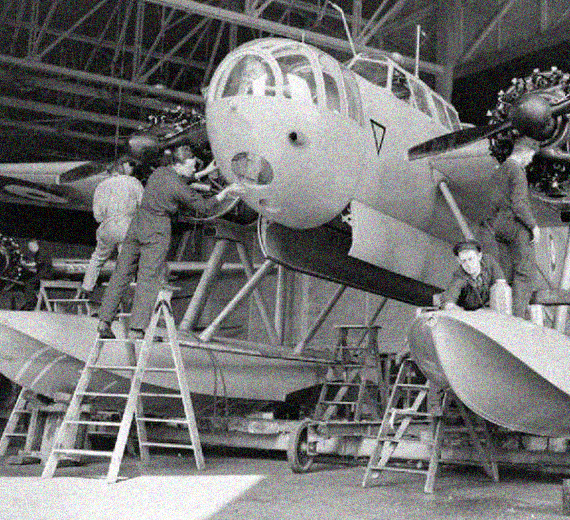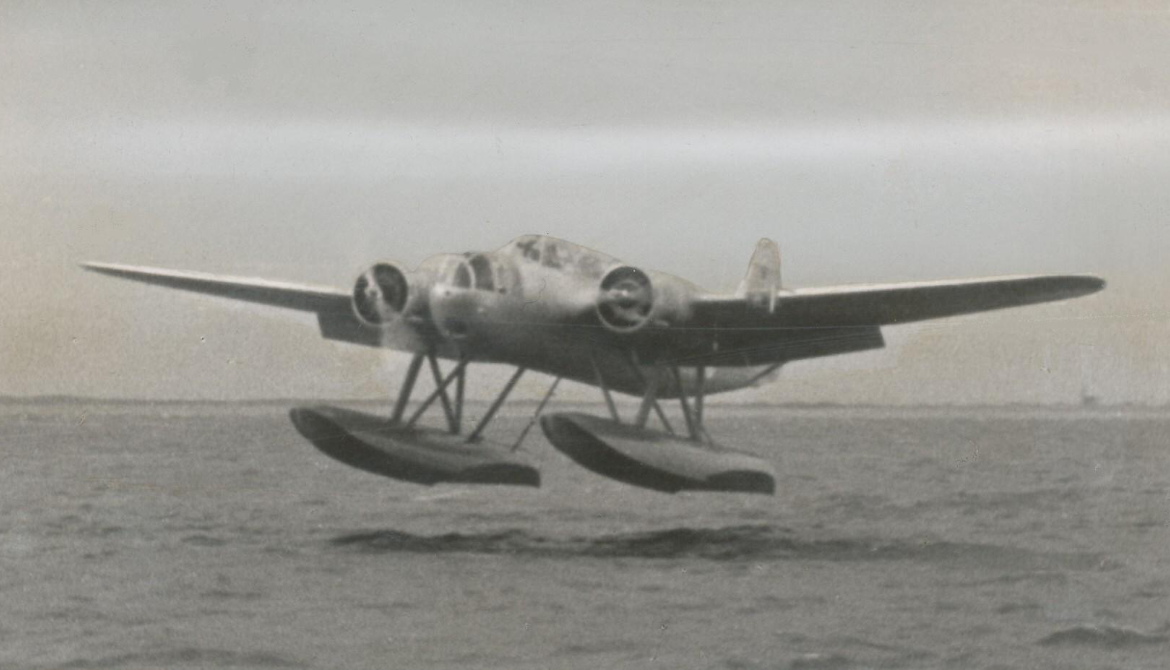Fokker T.VIII (WW2)
Torpedo Bomber
 |
|
| T.VIII in flight | |
| Role | Torpedo-bomber seaplane |
|---|---|
| Manufacturer | Fokker |
| First flight | 1938 |
| Introduction | 1939 |
| Primary users | Marine-Luchtvaartdienst Royal Air Force Luftwaffe |
| Number built | 36 |
|
|
.
History Fokker-Flugzeugwerke
Fokker T.VIII (WW2)
Torpedo Bomber

The Fokker T.VIII is a twin-engined torpedo bomber and aerial reconnaissance floatplane designed and manufactured by the Dutch aviation company Fokker.
It was developed in the late 1930s as a successor to the Fokker T.IV. While the Dutch Naval Aviation Service had originally intended to use it in home waters and in the Dutch East Indies, the Second World War broke out as production was beginning to meet these needs. The Royal Air Force (RAF) and the Luftwaffe operated small numbers of the type.
Development and production

Background
During the early 1930s, one of the consequences of the Great Depression was that many countries had little to spare for military procurement, even in light of ageing and obsolete aircraft. The Netherlands was no exception to this trend, however, following the rise to power of Nazism in neighbouring Germany, several Dutch officers and politicians recognised that military modernisation was increasingly necessary, particularly in the field of aviation. One requirement identified during 1937 by the Royal Netherlands Navy was for a new floatplane for coastal defense and aerial reconnaissance operations, which could be alternatively armed with either bombs or air-dropped torpedoes.
Operational history
Operators

- Finnish Air Force ordered 5 T.VIII W/C but none were delivered.
- Luftwaffe operated several captured aircraft.
0
KmCeiling
0
KmCombat RANGE
0
Km/hAircraft Speed
0
Max Crew
Photo Gallery
Fokker-Flugzeugwerke
Fokker T.VIII (WW2)
Torpedo Bomber


Fokker-Flugzeugwerke
Fokker T.VIII (WW2)
Torpedo Bomber
General Info
-
-
- Crew: 3
- Length: 13 m (42 ft 8 in)
- Wingspan: 18 m (59 ft 1 in)
-
Powerplant
-
-
- Gross weight: 5,000 kg (11,023 lb)
- Powerplant: 2 × Wright R-975-E3 Whirlwind 9-cyl. air-cooled radial piston engines, 336 kW (451 hp) each
-
-
-
Performance
- Maximum speed: 285 km/h (177 mph, 154 kn) at 3,000 m (9,843 ft)
- Range: 2,750 km (1,710 mi, 1,480 nmi)
- Service ceiling: 6,800 m (22,300 ft)
-
Related development
-
- 2 × 7.92 (0.312 in) machine guns
- 600 kg (1,323 lb) of bombs or torpedoes
- Bloch MB.480
- Blohm & Voss Ha 140
- Hall XPTBH
- SNCAC NC.4-10
.
Links to Youtube & Others
Early on 6 May 1941 four men – former Lieutenant Govert Steen and Corporal Evert Willem Boomsma, both of the Army Aviation Brigade, along with Fokker technician Wijbert Lindeman, and former Dutch Army Lieutenant Jan Beelaerts van Blokland – swam out to the Fokker T.VIIw TD+C
Fokker T.VIII (WW2)
Torpedo Bomber
In September 1918, eight D.VIIs were delivered to Bulgaria. Late in 1918, the Austro-Hungarian company Magyar Általános Gépgyár
Youtube Link
The Germans also acquired a number of T.VIIIs, having captured multiple partially-completed airframes that had still been under construction.

















